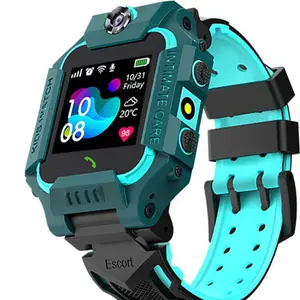Phổ biến trong ngành của bạn




Daqcn TBT7-A1 hẹn giờ Relay Led thiết bị điện đa chức năng 220V Điện áp duy nhất Din Rail Thời gian chuyển tiếp
178.297 ₫
Đơn hàng tối thiểu: 5 Cái







12V 100A 120A xe van xe tải máy phát điện khởi động tiếp sức
44.575 ₫ - 50.688 ₫
Đơn hàng tối thiểu: 100 Cái







ELEWIND ORU2ZL 8A 2 Set Rơle Điện Từ Công Suất Cao Nhỏ
Sẵn sàng vận chuyển
37.697 ₫
Đơn hàng tối thiểu: 1 Cái
Vận chuyển mỗi chiếc: 136.015 ₫







ELEWIND ORU2CL 10A 2 Bộ Rơle Trung Gian Công Suất Cao DC12V DC24V AC110V AC220V Cuộn Dây (Loại Thiết Bị Đầu Cuối Lớn)
Sẵn sàng vận chuyển
39.735 ₫
Đơn hàng tối thiểu: 100 Cái
Vận chuyển mỗi chiếc: 14.519 ₫







GEYA Thiết Kế Mới GRT8-M1 Mini Bộ Hẹn Giờ Mô-đun Điện Tử Rơle Trễ 220V Rơle Hẹn Giờ Đa Chức Năng
Sẵn sàng vận chuyển
182.117 ₫ - 224.399 ₫
Đơn hàng tối thiểu: 20 Cái
Vận chuyển mỗi chiếc: 63.423 ₫






10A 8 Chân Rơle Điện Tử Puprpose Chung LJQX-13F/2Z (Lh62p/LY2)
24.198 ₫ - 25.981 ₫
Đơn hàng tối thiểu: 500 Cái






Rơ Le Ormon Điều Khiển Đèn LED, 8 Chân, Hai Cực Điện Tử, 12V 24V
Sẵn sàng vận chuyển
22.924 ₫ - 28.018 ₫
Đơn hàng tối thiểu: 20 Cái
Vận chuyển mỗi chiếc: 35.150 ₫



LJQX-13F Rơ-le Điện Tử Phổ Thông Chất Lượng Cao 10A 8 Chân/2Z (HH62P/LY2)
17.830 ₫ - 25.471 ₫
Đơn hàng tối thiểu: 100 Cái
- 10%




ESR an toàn ánh sáng Rèm mô-đun NPN PNP đầu ra an toàn điện Relay sử dụng Rơ Le 12V thu nhỏ bảo vệ thiết bị điện tử
Sẵn sàng vận chuyển
1.752.144 ₫ - 2.627.833 ₫
Đơn hàng tối thiểu: 1 Bộ






G2R-2 16 Kênh Relay Module 2NO 2NC Điện Tử DPDT Chuyển Tiếp Relay 24V PNP
Sẵn sàng vận chuyển
1.477.313 ₫
Đơn hàng tối thiểu: 1 Bộ
Vận chuyển mỗi chiếc: 0 ₫






NOVA Original Electronic components power relay 12V 40A DIP 5Pin NT90HAE12CB For air automotive conditioning
5.095 ₫
Đơn hàng tối thiểu: 10 Cái
Các danh mục hàng đầu
Giới thiệu về rơle điện tử
Kinh ngạc với bộ sưu tập tiêu chuẩn sang trọng và tối ưu đáng kinh ngạc. rơle điện tử tại Alibaba.com và đưa ra một tuyên bố phong cách mạnh mẽ. Những tuyệt vời. rơle điện tử hiện đang được bán chạy nhất trên trang web và được giới trẻ và người già yêu thích do kiểu dáng và phong cách chưa từng có của chúng. Cho dù bạn muốn mặc chúng cho một bữa tiệc hay bất kỳ cuộc họp chính thức nào, chúng. rơle điện tử đi kèm với vẻ ngoài khác biệt giúp phân biệt bạn với những người khác.
Được làm và thiết kế từ các vật liệu chắc chắn, rơle điện tử đã nâng cao độ bền và tồn tại trong thời gian dài, đồng thời mang đến vẻ ngoài tuyệt vời thể hiện đẳng cấp của bạn. Những thiết bị đeo này thân thiện với môi trường và các công nghệ mới nhất của chúng đảm bảo hoạt động tối ưu. Tuyệt tác. rơle điện tử được trang bị các tính năng và đặc điểm nâng cao làm cho chúng trở nên độc đáo và có khả năng chống lại các điều kiện khác biệt và các tác động bên ngoài. Các. rơle điện tử có nhiều kiểu dáng và thiết kế đa dạng phù hợp với tất cả các sở thích của bạn bất kể giới tính hay độ tuổi của bạn.
Alibaba.com có nhiều loại. rơle điện tử có sẵn với nhiều màu sắc, hình dạng và kích thước để phù hợp với sở thích cá nhân và đặc điểm sản phẩm. Các sản phẩm này được trang bị các tính năng như chống thấm nước và chống cháy để bảo vệ tối đa. Báo thức, lịch và chronograph được tích hợp trong. rơle điện tử tăng tiện ích của chúng. Bạn cũng có thể chọn từ loại chống mài mòn đàn hồi hơn. rơle điện tử mà bạn có thể sử dụng khi thực hiện các hoạt động thể thao như bơi lội và chạy mà không làm hỏng chúng.
Khám phá điều hấp dẫn. Phạm vi rơle điện tử tại Alibaba.com có thể phù hợp với yêu cầu và ngân sách cá nhân của bạn. Các mặt hàng này có thể tùy chỉnh trong bản in và nhãn của chúng và đi kèm với thời lượng pin nâng cao .. Nhà cung cấp rơle điện tử đặc biệt có thể hưởng lợi từ các ưu đãi và giao dịch đặc biệt được thiết kế cho các mặt hàng được mua với số lượng lớn.
Được làm và thiết kế từ các vật liệu chắc chắn, rơle điện tử đã nâng cao độ bền và tồn tại trong thời gian dài, đồng thời mang đến vẻ ngoài tuyệt vời thể hiện đẳng cấp của bạn. Những thiết bị đeo này thân thiện với môi trường và các công nghệ mới nhất của chúng đảm bảo hoạt động tối ưu. Tuyệt tác. rơle điện tử được trang bị các tính năng và đặc điểm nâng cao làm cho chúng trở nên độc đáo và có khả năng chống lại các điều kiện khác biệt và các tác động bên ngoài. Các. rơle điện tử có nhiều kiểu dáng và thiết kế đa dạng phù hợp với tất cả các sở thích của bạn bất kể giới tính hay độ tuổi của bạn.
Alibaba.com có nhiều loại. rơle điện tử có sẵn với nhiều màu sắc, hình dạng và kích thước để phù hợp với sở thích cá nhân và đặc điểm sản phẩm. Các sản phẩm này được trang bị các tính năng như chống thấm nước và chống cháy để bảo vệ tối đa. Báo thức, lịch và chronograph được tích hợp trong. rơle điện tử tăng tiện ích của chúng. Bạn cũng có thể chọn từ loại chống mài mòn đàn hồi hơn. rơle điện tử mà bạn có thể sử dụng khi thực hiện các hoạt động thể thao như bơi lội và chạy mà không làm hỏng chúng.
Khám phá điều hấp dẫn. Phạm vi rơle điện tử tại Alibaba.com có thể phù hợp với yêu cầu và ngân sách cá nhân của bạn. Các mặt hàng này có thể tùy chỉnh trong bản in và nhãn của chúng và đi kèm với thời lượng pin nâng cao .. Nhà cung cấp rơle điện tử đặc biệt có thể hưởng lợi từ các ưu đãi và giao dịch đặc biệt được thiết kế cho các mặt hàng được mua với số lượng lớn.























